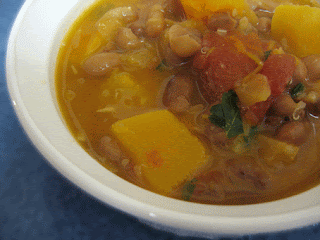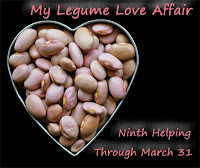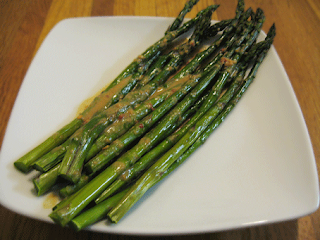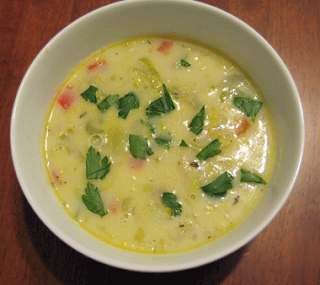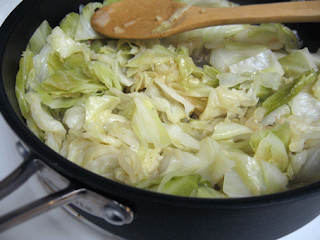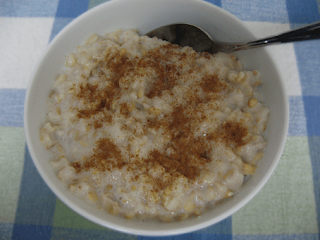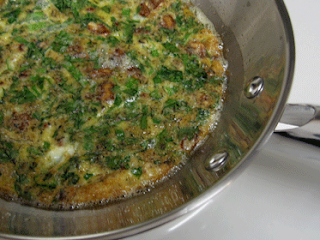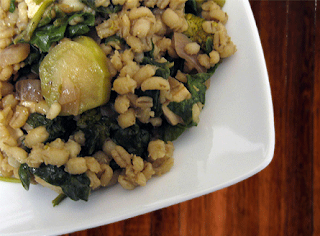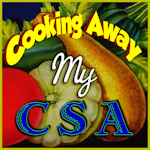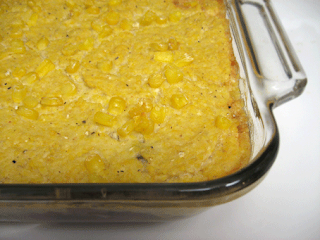
Alrighty, it's time to wrap up the cookbook of the month posts for this month. This is the final post from "Whole Grains Every Day, Every Way" by Lorna Sass (at least for a while). This recipe was originally a masa harina and beef casserole, but I used what I had on hand.
Corn and venison casserole (adapted from "Whole Grains Every Day, Every Way" by Lorna Sass)
1/2 Tbsp olive oil
1 onion, chopped
1 green bell pepper, diced
1 1/4 lbs ground venison
2 garlic cloves, minced
1 tsp dried oregano
1/2 tsp ground cumin
pinch of salt (for meat)
freshly ground black pepper
1 can (15 oz.) diced tomatoes with green chiles (like Rotel)
1 1/4 cups medium-grind cornmeal
1 1/2 tsp salt (for topping)
1 tsp chili powder
1 egg
1/2 cup plain yogurt
1/4 tsp baking soda
1 cup corn kernels (I used frozen ones, and didn't bother to thaw them)
Heat oil in a large skillet. Add onion and green pepper and cook until tender (about 5 min). Add venison, garlic, oregano, cumin, and salt and pepper. Break up meat and continue to cook until meat is cooked through. Then stir in the diced tomatoes and bring to a boil. Reduce heat to medium-low and let simmer while you prepare the topping.
Pour 4 cups of cold water into a pot. Slowly whisk in the cornmeal until it's completely blended. Whisk in salt and chili powder. Bring this to a boil over high heat, then reduce the heat so that it's at a gentle boil. Stir constantly until it thickens and has a consistency similar to cake batter (about 8 min), and then remove from heat. In a separate bowl, beat the egg and add in yogurt. Add 1 cup of the cornmeal mix to egg/yogurt, then stir this and the baking soda into the pot of cornmeal mix.
Place meat in a baking dish (I used 11 1/2 x 8 1/2", and I wouldn't use anything smaller), making sure to leave most of liquid behind. Pour cornmeal batter over the top and then sprinkle corn kernels on top. Bake at 350 for 45 min, or until it's brown and bubbly. If your dish is very full, you may want to place a baking sheet underneath to catch any overflow. Let sit for 10 min before serving. Serves 6.
This was good, and reminded me a lot of a grits and sausage breakfast casserole (only without any cheese) that Mom used to make. I would add more veggies if I were to do this over again (like chunks of onions and more bell pepper). And, come to think of it, cheese would be a nice addition, and could either be stirred into the meat or batter (or both) right before putting them in the dish.
This wasn't my favorite recipe that I've made from this book, but it's still good and brings in great Mexican flavors. My favorite of Lorna's recipes have been the barley and tofu stir-fry, the Thai salmon and brown rice, and the two desserts (bulgur pudding and creamy wheat berries). But, this recipe and the hominy with shredded chicken and amaranth, quinoa, and corn chowder were also tasty. The only one that I wouldn't consider making again is the amaranth porridge, but it was still a good experiment for my taste buds.
I'm enjoying focusing on a cookbook or two each month. It makes meal planning much faster because if I don't give myself any guidance I end up reading recipes for hours before deciding on what to make for the week. It's also a great way to explore each of my many cookbooks in depth. I'll wait to announce the cookbook for April (I know you're all waiting on the edge of your seats!), but I'll just say that there may be a little bit less meat in my diet...











